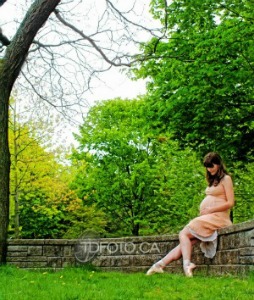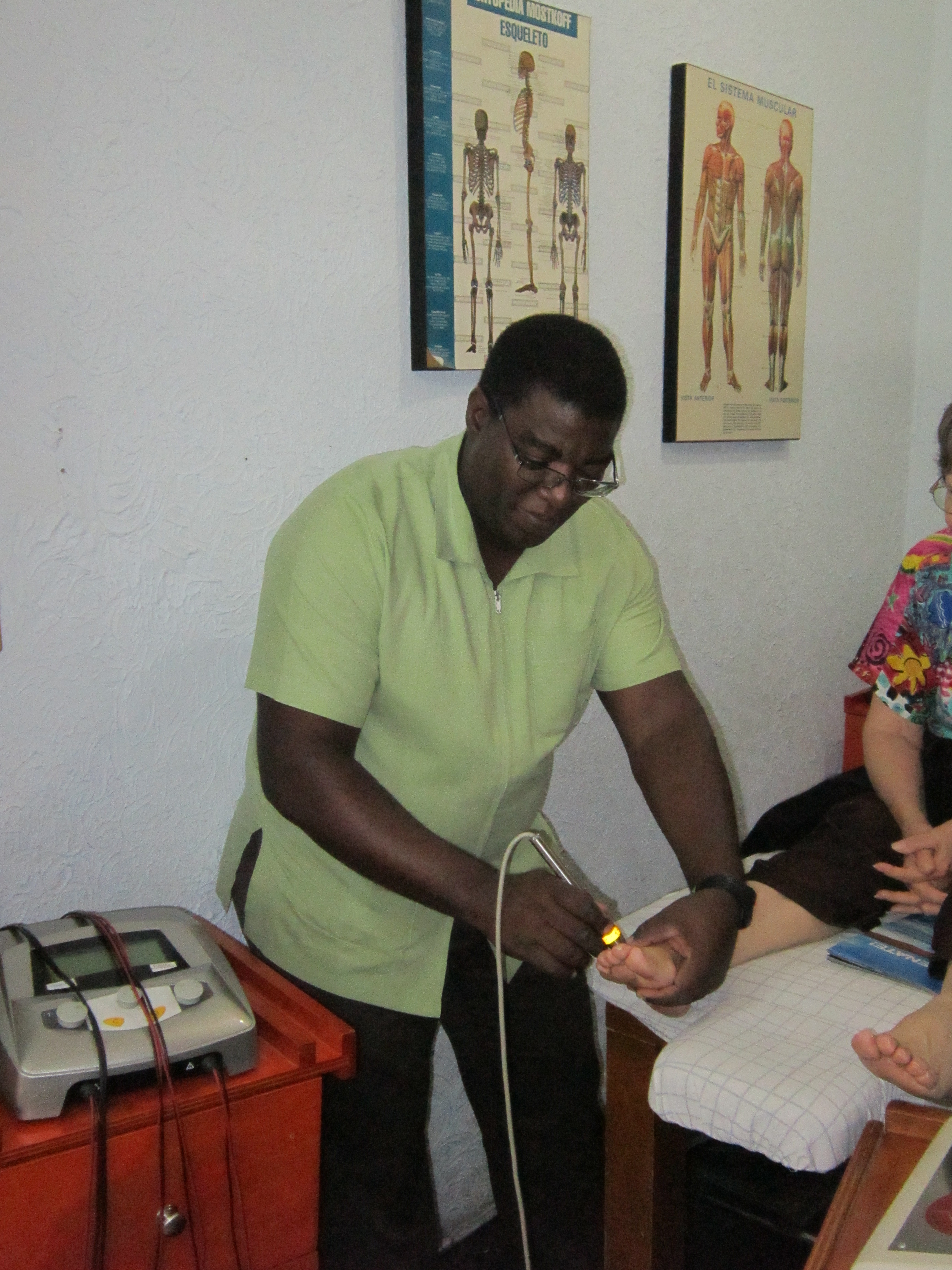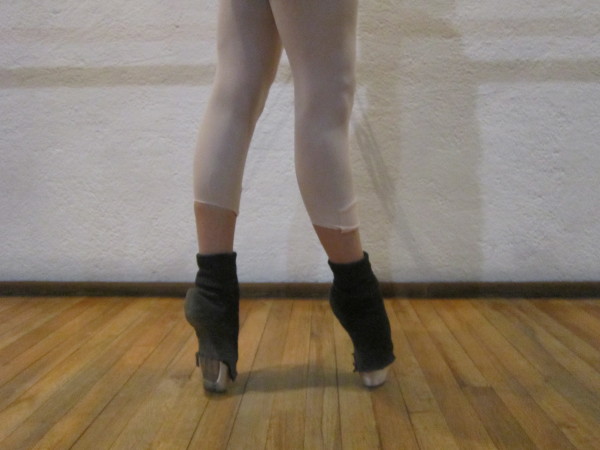![How Do I Get My Knees To Straighten? [Video]](../../wp-content/uploads/2014/07/IMG_0432.jpg)
by Romy Macias, Senior Editor | Jul 2, 2014 | Ballet Dancers, Ballet Health
This was a problem I had during my years of training, and I know I’m not alone: You feel as if your knees are completely straight, yet your teacher keeps asking you to straighten them; they look bent! What do you do? How Do I Get My Knees To Straighten? Lisa Howell from the Ballet Blog, is a physiotherapist from Australia who has authored several ebooks for ballet dancers. Here’s her advice. It can be tricky to work without the help of a professional physiotherapist. So read, but consult your ballet teacher or physiotherapist before doing this on your own! How Do I Get My Knees To Straighten? There are a few things that I routinely check on anyone who complains of knees that don’t straighten. 1 ) The first thing I do is assess how much range they have in their knees, by bending and straightening the knee myself (i.e. with no muscle activity. Some girls have reasonable range but just find it hard to do it themselves). 2 ) If the student has full range but just finds it hard to straighten the knees in class, I get them to sit with their legs outstretched and “pull up” their knees, at the same time as I feel the muscle on the inside of the knee. 3 ) If however the student does not have full range in the knee even when it is being moved by someone else, we need to track down exactly what is blocking the range. The first thing to check is where she “feels” the restriction when she tries to straighten her knees. Does she feel a stretching in the back...
![Why Don’t Ballet Dancers Get Dizzy When Pirouetting? [Video]](../../wp-content/uploads/2014/03/dancers-brain-pirouettes.jpg)
by Romy Macias, Senior Editor | May 21, 2014 | Ballet Dancers, Ballet Health
Interesting study found that ballerinas’ brains adapt to suppress dizziness when doing pirouettes, thanks to years of training. Why Don’t Ballet Dancers Get Dizzy When Pirouetting? A study has found important differences in ballet dancers’ brain structures that stop them from feeling dizzy while spinning. Dr Barry Seemungal, the neurologist who led the research, explained to the Today programme that it was a “training-based phenomenon”. Article from BBC. Researchers at the Imperial College London say they’ve discovered differences in the ballet dancers’ brain structure that help them suppress that dizzy feeling. They say their ballet brain study could lead to new therapies to help the one in four people, researchers claim, who suffer from chronic dizziness. “[The ballet dancer’s] brain adapts over years of training to suppress that input [of dizziness],” says Dr. Barry Seemungal, who lead the research. The study also indicated the more experienced the dancer, the smaller that area of the brain. Seemungal says if science can target that same brain area or monitor it in patients with chronic dizziness, researchers can begin to understand how to treat those patients better. Complete article at CBS News. Video courtesy of YouTube. Why Don’t Ballet Dancers Get Dizzy When Pirouetting? They found that the part of the cerebellum which processes the signal from the balancing organs, was smaller in the dancers. The cerebellum is the part of the brain that governs body movement. “It’s not useful for a ballet dancer to feel dizzy or off balance,” said Seemungal. “Their brains adapt over years of training to suppress that input” — allowing them to continue dancing after spinning around in a...

by Romy Macias, Senior Editor | May 11, 2014 | Ballet Dancers, Ballet Health
Are You A Dancing Mom or Mom to a Dancer? Being a dancer and a Mom can be a real challenge, yet full of satisfaction, as many ballet moms can account for. If you fall into this category, you know what I mean. However, being a mom to a training ballerina has it’s own obstacles to leap over! 😉 Are You A Dancing Mom or Mom to a Dancer? So this image and short post is for you. Enjoy Dan Freeman’s of TDFoto.ca with expectant ballerina Keiichi Hirano and have a Happy Mother’s Day!...
![Zena Rommett Leaves Legacy Behind: Floor-Barre® Technique for Dancers and Non-Dancers! [Video]](../../wp-content/uploads/2014/04/zena-rommett-with-mercedes-ellington-2-300-x-151.jpg)
by Romy Macias, Senior Editor | Apr 17, 2014 | Ballet Health, Editor's Choice
Zena Rommett leaves legacy behind for scores of dancers, athletes, actors and “regular” folks who found a balanced exercise program. Zena Rommett (1920-2010) Video source: YouTube. Born in Italy, Ms. Rommet came to the United States at the age of 5. Zena Rommett was the originator of the world renowned Zena Rommett Floor-Barre Technique®. The technique utilizes the floor to correct and refine body alignment, and includes gentle exercises to strengthen joints, increase vitality, and help rehabilitate injuries without the pressure of gravity. Among the countless Floor-Barre enthusiasts are performers Tommy Tune, Judith Jamison, Lar Lubovitch, Melissa Hayden and John Curry who proclaim they ‘owe it all to her genius’ for saving and extending their careers while she coached them to a new level of perfection, freedom and confidence. For more on this visionary teacher, visit: http://www.stepsnyc.com/faculty/bio/Zena-Rommett/ Zena Rommett Leaves Legacy Behind Unlike traditional ballet barre exercises, which require students to stand upright holding a barre attached to a wall, Ms. Rommett’s Floor-Barre begins with students stretched on the floor and proceeds with gentle exercises to refine bodily placement, strengthen joints, increase vitality and help rehabilitate injuries without the pressure of gravity or the tendency toward rigidity that sometimes accompanies traditional standing-barre exercises. As she said in a 2008 interview in Dance magazine, “Many dancers don’t know how to stand correctly.” Source: The New York Times. Student: I don’t know if I’ve ever met a teacher like Zena, who cares as much about what she’s teaching. She’s focused on her work and carrying it through. She is a teacher’s teacher. The more you take her classes, the easier dancing...

by Romy Macias, Senior Editor | Oct 15, 2013 | Ballet Dancers, Ballet Health, Editor's Choice
I’ve always been fascinated with what I’ve learned from my injuries. Of course, it helps that I have a great physiotherapist who is very professional and supportive. His name is Andres Povea and we have been working together for over 15 years. One of the discoveries I’ve made through my injuries is that the “flexibility myth” is just that… a MYTH! The myth is that our flexibility is directly related to the length of our muscles. As it turns out, this is not so. The Flexibility Myth and Flexibility Exercises for Dancers But before we go into what makes a dancer flexible or not, let’s take a look at a part of our bodies that is basic in understanding flexibility. Lisa Howell from Perfect Form Physio and The Ballet Blog is another physiotherapist I trust and follow. Below she explains what the fascia is and how it relates to your flexibility. Most people learn anatomy by learning about the bones and the muscles that attach to them. This is a good start, but is not really an accurate picture of our true anatomy. We are not just a skeleton held together with muscles and ligaments. A better picture is to imagine a mass of tissues including muscles, bones and ligaments, bound together, organized and coordinated by a complex web of fascia. Imagine your fascia as looking like an enormous spider web that covers over every one of your muscles and links it to the next one. It intertwines with everything in your body, including your stomach, your lungs, your eyes and your toes. If you have ever seen a...
![Featured Ballerina: Alessandra Ferri [Video]](../../wp-content/uploads/2012/03/alessandra-ferris-feet.jpg)
by Romy Macias, Senior Editor | Mar 2, 2012 | Ballet Dancers, Ballet Health
Alessandra Ferri is one of my favorite ballerinas. Not only because she has the most incredibly beautiful ballet feet, but because of her powerful stage presence and dramatic interpretation, as you’ll witness in the music video below where she appears with Sting: as he plays, she dances with absolute technical control and spiritual abandon. How did Alessandra Ferri get started? Alessandra Ferri was born in Milan, Italy in 1963. She studied at Teatro alla Scala, Milan, until the age of 15, and then attended the Royal Ballet School. She won one of the three Prix de Lausanne for 1980, which enabled her to continue her studies at the Royal Ballet School on scholarship before joining The Royal Ballet later that year. Source from BallerinaGallery.com. Royal Ballet She danced with the Royal Ballet (1980–1984), American Ballet Theatre (1985–2007) and La Scala Theatre Ballet (1992–2007) and as an international guest artist, before retiring on August 10, 2007, aged 44. Ferri joined the Royal Ballet in 1980 and in 1982, for her first major role in the ballet Mayerling, she was nominated for the Laurence Olivier Award for Outstanding First Achievement of the Year in Ballet. In 1983, she was nominated for and won the Laurence Olivier Award for Outstanding Individual Performance of the Year in a New Dance Production for her role in Sir Kenneth MacMillan’s Valley of Shadows. In 1984, she was promoted to the rank of Principal Dancer. American Ballet Theatre In 1985, Ferri left the Royal Ballet at the request of Mikhail Baryshnikov to become a Principal Dancer with American Ballet Theatre, under Baryshnikov’s own direction.[4] She stated...
![How Do I Get My Knees To Straighten? [Video]](../../wp-content/uploads/2014/07/IMG_0432.jpg)
![How Do I Get My Knees To Straighten? [Video]](../../wp-content/uploads/2014/07/IMG_0432.jpg)
![Why Don’t Ballet Dancers Get Dizzy When Pirouetting? [Video]](../../wp-content/uploads/2014/03/dancers-brain-pirouettes.jpg)

![Zena Rommett Leaves Legacy Behind: Floor-Barre® Technique for Dancers and Non-Dancers! [Video]](../../wp-content/uploads/2014/04/zena-rommett-with-mercedes-ellington-2-300-x-151.jpg)

![Featured Ballerina: Alessandra Ferri [Video]](../../wp-content/uploads/2012/03/alessandra-ferris-feet.jpg)

